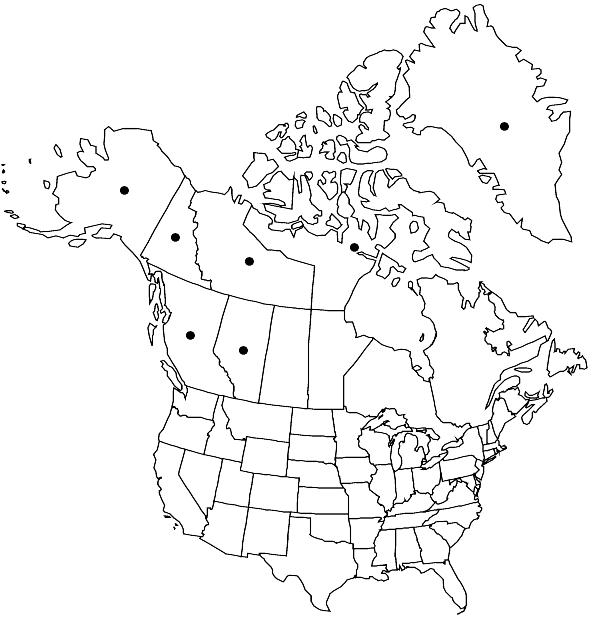Difference between revisions of "Bryobrittonia longipes"
Brittonia 30: 19. 1978,.
FNA>Volume Importer |
FNA>Volume Importer |
Revision as of 21:51, 16 December 2019
Stems erect, 25 mm. Leaves 3–6.5 mm; laminal cells 10–25 µm, walls thin; basal cells long-rectangular, 140 µm, walls weakly thickened, smooth; basal marginal cells weakly differentiated, longer than laminal cells. Seta 20–40 mm. Capsule ovoid-cylindric, 2–3 mm, ribbed, exothecial cells long-rectangular, walls weakly thickened; peristome teeth linear, 1 mm, papillose, erect when wet, somewhat recurved or twisted when dry; endostome almost as long as teeth. Operculum 2 mm. Calyptra campanulate, 4–8 mm, smooth. Spores 12–20 µm, papillose, brownish green.
Habitat: Calcareous soils along stream and river banks in Arctic and montane habitats
Distribution

Greenland, Alta., B.C., N.W.T., Nunavut, Yukon, Alaska, Europe (n Russia), c Asia.
Discussion
Bryobrittonia longipes is similar to the larger, peristomate species of Encalypta (for example, E. procera) but differs in being dioicous and having laminal cells mammillose, distal leaf margins serrulate, and very long seta.
Selected References
None.
